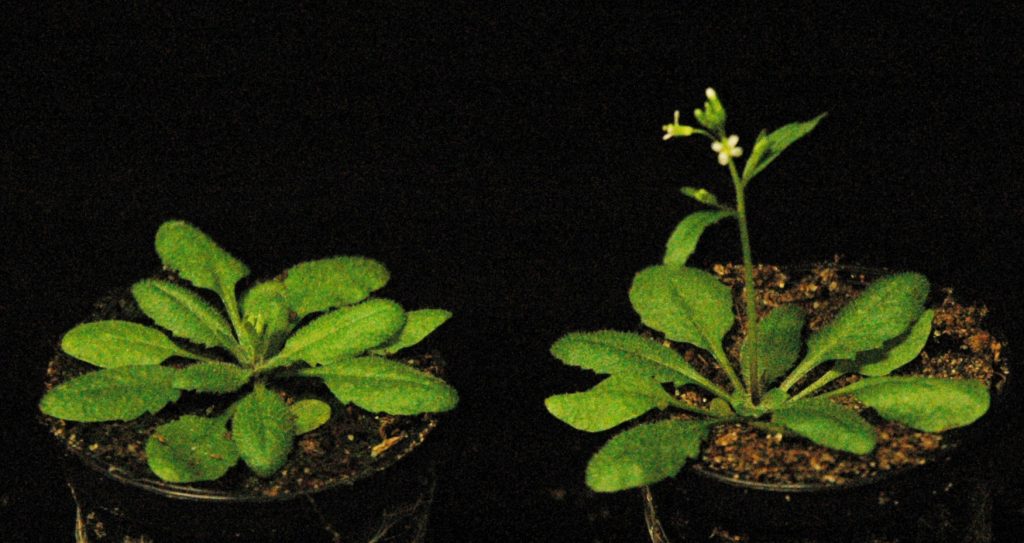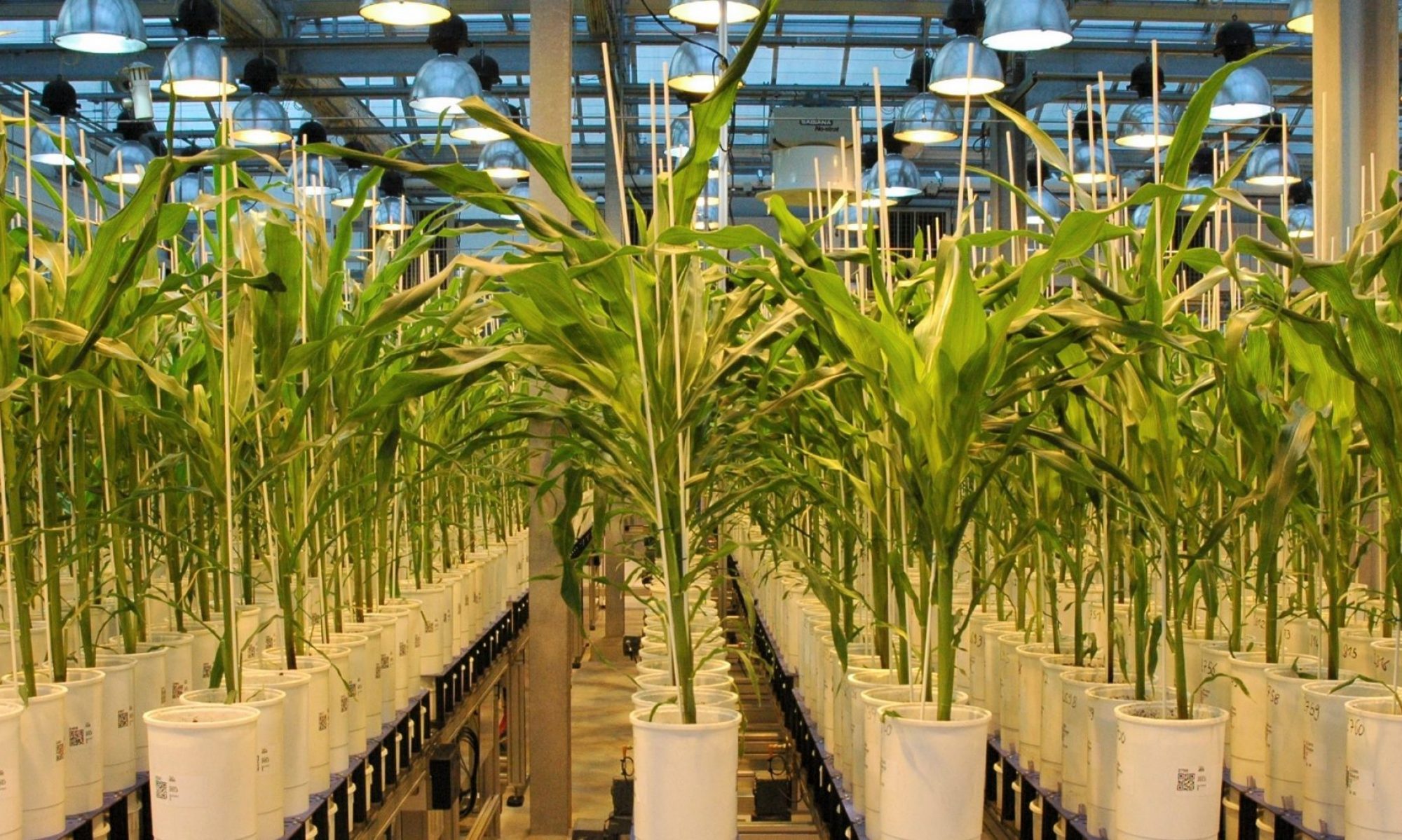Plants have evolved unique abilities to dynamically adjust their physiology and development in response to the environment. The switch to flowering exemplifies a key environment-sensitive developmental transition that greatly impacts fitness and yield in natural plant populations and crops. Light, temperature, and water availability impose limitations to plant survival, growth, and reproductive success, affecting species distribution and crop performance. Understanding how environmental variables are perceived by plants and translated into developmental information is thus paramount in the context of current trends of changing climate.
Our lab studies how water deficit signals affect plant development with a particular focus on flowering time regulation and growth. While progress has been made in defining the nature of drought and flowering signals individually, our understanding of their integration is limited. These traits are difficult to capture in terms of the molecular mechanism as they derive from complex adjustments to gene expression.

We are investigating this complex trait at different scales of resolution using molecular genetics approaches. A key source of information derives from the powerful mutant analysis available to us in Arabidopsis including its extensive natural genetic variation. This is combined with molecular approaches to analyze proteome, genome, and transcriptome composition, structure, and regulation. The ultimate goal is to define how drought signals converge to regulate gene expression and the adaptability of plants to varying irrigation scenarios.
Besides Arabidopsis, we are also interested in understanding the regulation of flowering time in maize in collaboration with partners based at INRAE LEPSE in Montpellier. Flowering time is a major trait determining the success of maize cultivation at different latitudes and in the face of different agronomic constraints. We recently discovered that the variability of maize flowering across temperate climates depends on the regulation of two florigenic genes ZCN8 and ZCN12. The transition to flowering can thus be optimized by fine-tuning ZCN8/12 expressions, combining different ZCNs upstream regulators. Our work in pills is here.
Our work is generously supported by different agencies and organisations:




